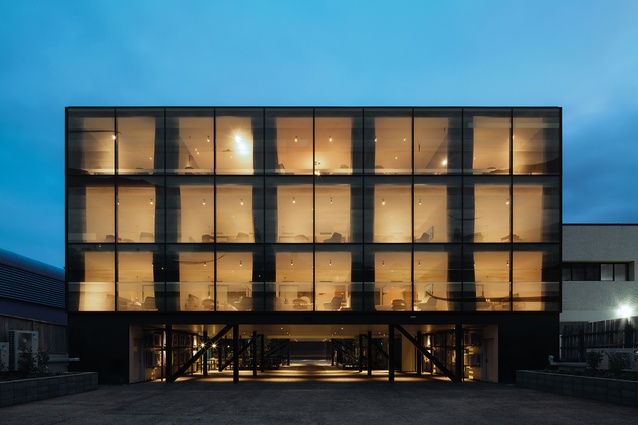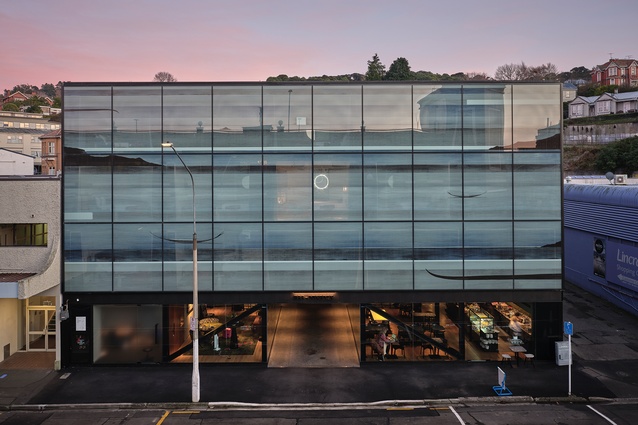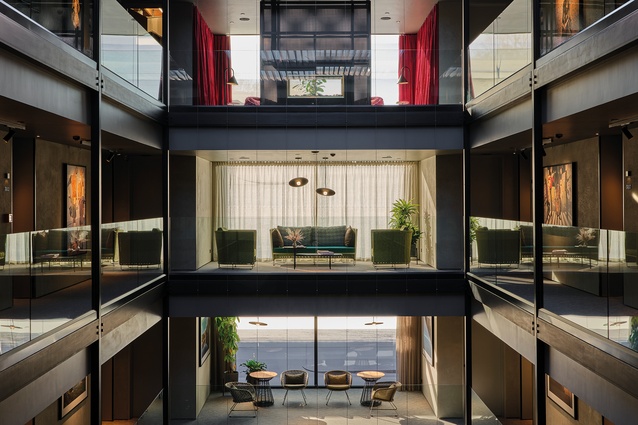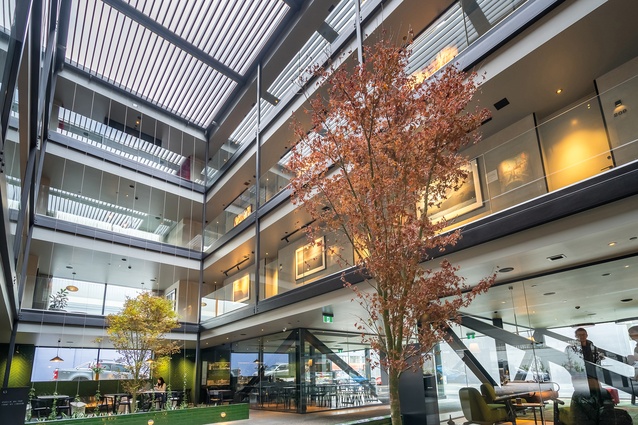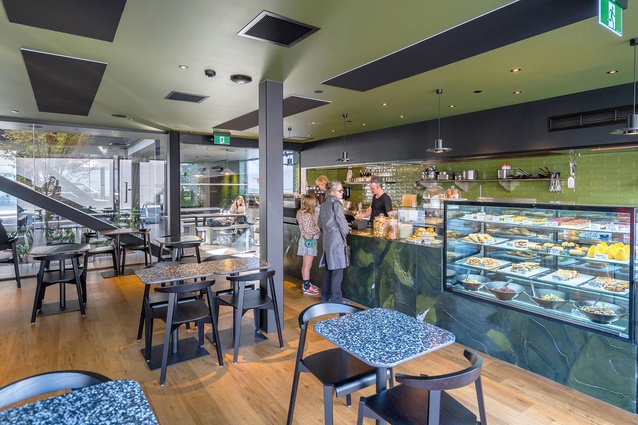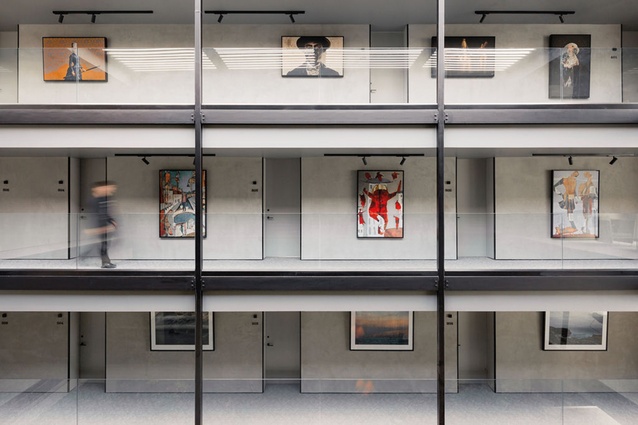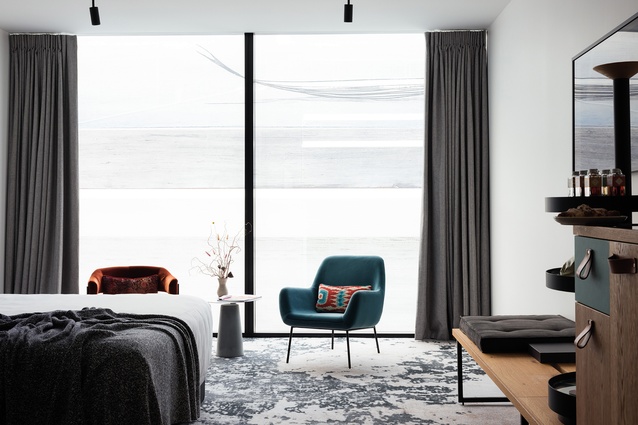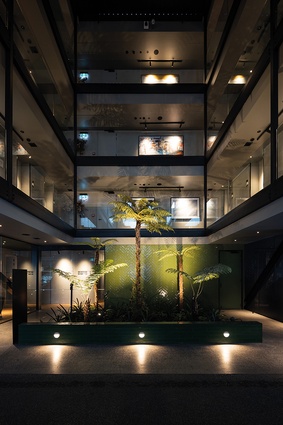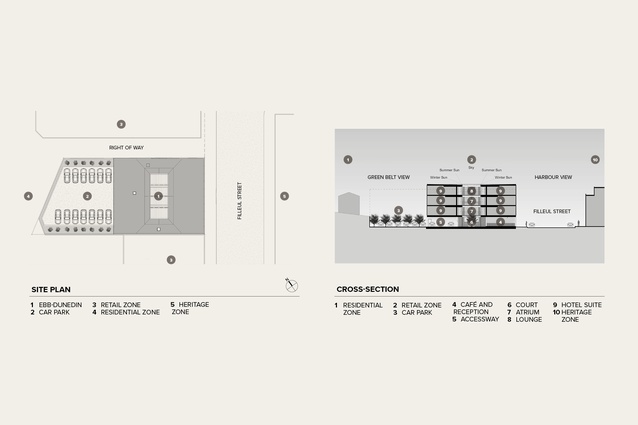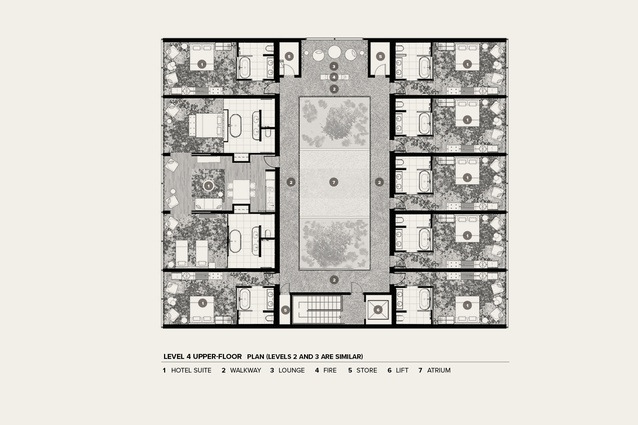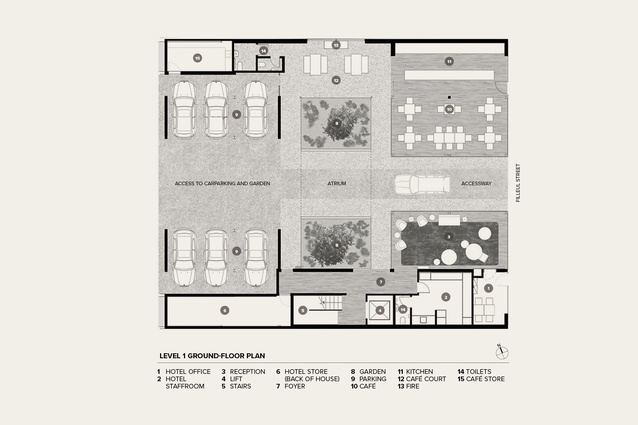Civic good manners
John Walsh talks to Gary Todd of Gary Todd Architecture about his award-winning Ebb-Dunedin and its underlying narrative to connect the building in place and time.
Eat your hearts out, Stevens Lawson, Fearon Hay and RTA Studio — your awards’ hit rates are impressive but Dunedin architect Gary Todd’s is well-nigh perfect. In 2022, almost 50 years after he started out in architecture as a teenaged ‘print boy’, Todd entered the Institute of Architects awards programme seriously for the first time. His firm’s project, Ebb-Dunedin in downtown Otepoti, not only won a New Zealand Award but gained top-tier recognition in the form of the Sir Miles Warren Award for Commercial Architecture.
That’s quite a feat of architectural summiting and it would be understandable if Todd regarded Ebb’s elevation as the apotheosis of his career. Not so. He prefers to see the Sir Miles Award not as the culmination of a journey but as confirmation he’s on the right track. Todd’s on a mission to make a difference — to improve the built quality of his city and, in the face of a climate crisis, reassert the centrality of the architect in the design process.
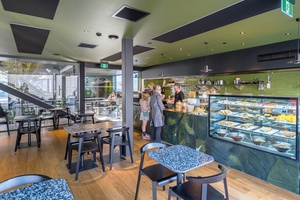
Like all architectural projects with happy outcomes, Ebb-Dunedin is the result of various components clicking into place. Serendipity always plays a part in such synchronicity. The building is an exemplary case of an architect recognising an opportunity and, to the benefit of a private client and the advantage of the public realm, making the most of it. Todd received the design commission in the time-honoured manner of professional men and women in smaller (and larger) towns: that is, via a personal contact. The architect’s friendship with the new owner of a site on Filleul Street, just a block west from George Street, Dunedin’s main retail street — currently receiving an extensive revamp, the progress of which is grumpily annotated on the letters page of Otago Daily Times — allowed him leeway to advocate for a different development option.
The landowner, a local investor with an unusually long-term perspective, was considering putting an apartment building on the site but Todd made the case for a small hotel. This, he argued, would be a fitting use of the central city plot; not only would the building respond to a typological need — boutique hotel accommodation is in short supply in Dunedin — but it would also enliven a mixed-use precinct with a rump of characterful, if not especially well-maintained, commercial and residential heritage buildings. In particular, the building might model some civic good manners on a stretch of streetscape miserably dominated on one side by the rear elevation of the Meridian Mall: a mute wall that unwittingly supplies a strong argument for the establishment of a Dunedin urban design panel.
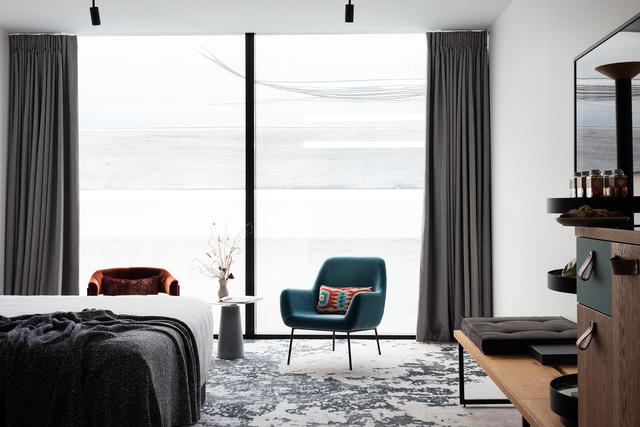
Ebb is a kind of built manifesto – Todd’s apologia pro vita sua, you might say, but quietly, in Presbyterian Dunedin. The building’s private and public purposes, its appropriate scale — it did receive one floor of height dispensation — and consideration of context, its design principles and the materials and methods of its construction, are evidence of what Todd has learned as an architect and testimony to what he believes is important.
There would be few more convincing frontpersons for any campaign promoting continuing professional development. The son of a father who was a carpenter and joiner and, later, a building inspector, Todd was “always interested in architecture”, he says. He entered what was, and significantly remains, a vocational field careful to police the distinction between technical roles and professional status, through the blue-collar gate, apprenticing at the venerable Dunedin practice of Mason & Wales.
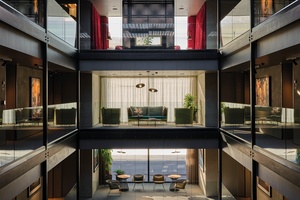
Seven years later, he moved to the Ministry of Works where he was assigned to, among other projects, the design of Cromwell Town Centre. He then joined Dunedin firm Harrison Gillies Architects, where he worked on Otago Polytechnic, before setting up his own practice, which is now a five-strong office that focuses on residential and commercial work in Dunedin and Central Otago.
In 2013, Todd became a capital-A Architect after successfully submitting a portfolio of his work, including the restoration of Dunedin Railway Station, to the New Zealand Registered Architects Board. He is, by any measure, hugely experienced — he estimates he has worked on more than 1000 projects of all sizes and types during his time in practice.
Todd says that, over the past decade, he has become increasingly conscious of the larger contexts in which architects operate, and the challenges they have a duty and a competency to address. His awareness was heightened in 2015, he says, by the coincidence of local and global events: a “one in a hundred years” — a meaningless descriptor, these days — flood that inundated South Dunedin and the signing of the Paris Agreement (the Paris Climate Accords).
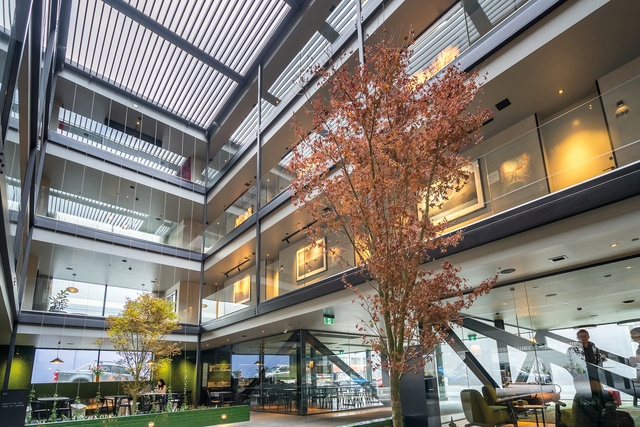
In Dunedin, like everywhere else, it’s clear that the design of urban environments now has an urgent existential dimension. “I thought, ‘Who’s going to do something about this?’, ” Todd says. “As architects, it’s our role and responsibility to lead the way.” Todd says his environmental thinking has evolved over the years, latterly under the encouragement of his children (his son is a builder and his daughter an architectural designer). “They give me books to read,” Todd says. “We’re a green family.” But there is also a long-term consistency to Todd’s design philosophy.
Ebb-Dunedin is a contemporary point on the continuum of a career that began when modernism still held sway in New Zealand architecture. On the hotel’s rectangular modernist form, Todd has deployed a classic modernist and rather industrial material palette, which is substantially prefabricated — concrete panels, steel joinery, glass curtain walls — and, at the other end of the building’s life, will be easily demountable.
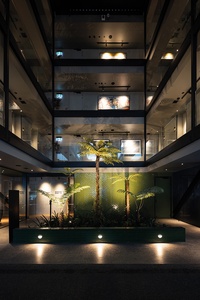
The hotel is organised around the atrium that rises from the ground level, with its informal reception area, public café, undercroft parking, garden and green wall through three floors of guest rooms, all accessed off the art-lined walkways/corridors surrounding the internal void, to the rainscreen roof. The idea, Todd says, was to impart some legibility to a layered ascent from ground to sky.
Narrative is important to this project; Todd was concerned to “tell a story” in order to connect the building in place and time. That is, he sought to establish geographical and historical relationships between the building and its immediate surrounds and wider site. This was not at all a straightforward exercise; Todd wanted the building to respect and contribute to the neighbourhood but had to accept that, after decades of indifferent development, Filleul Street didn’t have much to give in return.
The once locally proximate foreshore has long since been lost to reclamation — a surrender alluded to in Ebb-Dunedin’s name — and, in addition to the mall’s backside, much of the street is monstered by a multi-level car park. If context was lacking, the answer was to re-imagine it and offer it back to the street. Ebb-Dunedin’s signature design element — from a public or urban design perspective — are the glass curtain walls on the building’s front (east), rear (west) and side (north) elevations.
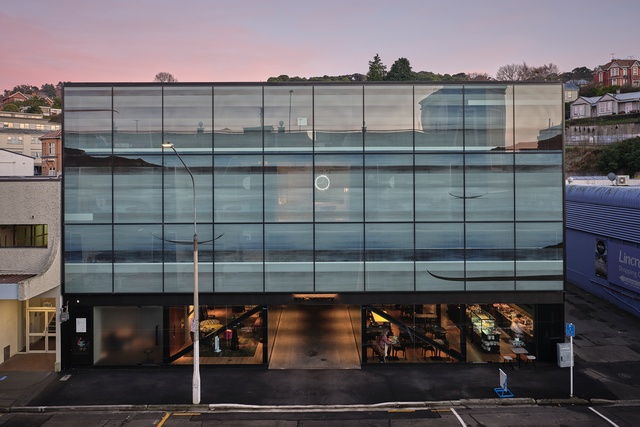
The 15 glass panels that clad the upper three levels of both main façades — there are fewer panels on the building’s narrower north side — are imprinted with a work by Otepoti artist Simon Kaan, illustrating the arrival of waka in Otago harbour. It’s a quietly elegiac work which rewards the daytime gaze; at night, the hotel’s lighting lends a welcoming lantern effect to old Filleul Street. (Perhaps the diurnal/nocturnal dichotomy expresses two sides of the artist’s lineage – Ngai Tahu and Chinese).
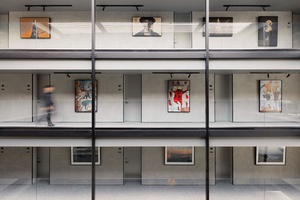
As for the core commercial business of the design: accommodation space on the hotel’s two lower guest floors is democratically apportioned, each of the 10 rooms occupying 35 square metres. On the top floor, three of the rooms sacrifice their space for the hotel’s sole large suite. Market research by the architect and client — who, enthused by the project, decided to operate the hotel and not just own it — settled on a model not dissimilar to that of the Australasian chain QT Hotels.
That company incorporates art and contemporary design in its hotel fit-outs. Ebb-Dunedin’s room design was carried out by Sydney interiors practice Indyk Architects, working at, perhaps, the more restrained end of their fit-out spectrum. Hotels are their own little worlds: self-contained retreats and, not blessed with a scenic outlook, Ebb-Dunedin is necessarily something of an urban oasis. Admirably, it is, in its generous disposition and regenerative intent, much more than that: an object, as Todd says, in service of a larger objective.

